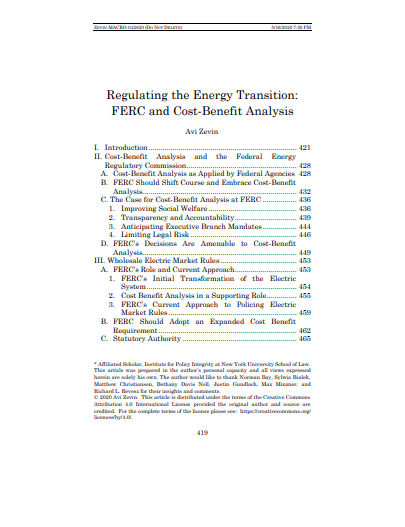The energy system is in the midst of a transition. Technological advances and growing public concern about global climate change are leading to a substantial change in the production and use of energy resources, including from natural gas, wind turbines, solar photovoltaics, battery storage, and demand response. One federal agency—the Federal Energy Regulatory Commission (FERC)—is responsible both for approving key energy infrastructure projects and for overseeing the operation of electric markets, and so will play a critical role in guiding the transformation of the energy system while maintaining its reliability and affordability.
This article, published in the Columbia Journal of Environmental Law, argues that, FERC’s management of this transition would be significantly enhanced if it embraced cost-benefit analysis—including accounting for important indirect costs and benefits such as the effect on climate change—to guide its decisionmaking. Changing course and adopting cost-benefit analysis will allow FERC to manage the energy transition while maximizing social welfare, enhancing transparency and accountability, and mitigating legal and political risk. The article focuses on two of FERC’s most significant responsibilities—approval of electric market rules and of natural gas infrastructure certificates. For each, the article evaluates FERC’s current approach to decisionmaking, concludes that FERC has the statutory authority to use cost-benefit analysis, and identifies relevant costs and benefits that FERC can consider and the economic tools available to do so.

